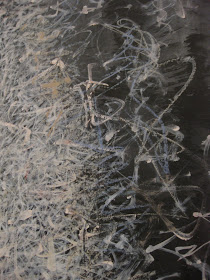Some people seem to be born under a lucky star. A perfect example of this is Paul Newman: handsome, talented, entrepreneurial, visionary, compassionate – did I mention handsome? - he seemingly had it all. While most of us think of him first as an actor, a very close second for me is his career as a philanthropist. The story of how, in 1980, he brewed up a batch of homemade salad dressing in his Connecticut basement for Christmas gifts, sparking a food empire called Newman’s Own, is legendary. PN insisted the company’s products be made with all-natural ingredients and without preservatives. This may sound like old hat to us today but in the '80s it was unheard of. Also unheard of was PN’s idea to donate every last penny of net royalties and profits after tax from Newman’s Own to charity. Which brings me to Paul Newman the Philanthropist and why Newman’s Own is on my mind.
I heard on the news that Newman’s Own recently passed a massive milestone: through the Newman’s Own Foundation, $300 million dollars have been given to charities around the world. $300 million dollars! That’s an unbelievable amount of money to have come from such a humble start (albeit, as humble as a start can be when a Hollywood legend is involved in the mix). $300 million dollars means the foundation has given a tremendous number of people, not born under a lucky star, a chance at hope they might otherwise not have had. 
The charity closest to Newman’s heart was the one he helped start in 1986 called The Hole in the Wall Gang Camp. Children with serious medical conditions are invited to come to the camps, free of charge, to do what all kids do at camp: have a good time, learn, and make friends. Newman felt that surrounding kids with other kids facing similar obstacles would help free them of shyness and fear and encourage independence, confidence, and optimism. Judging from the comments on the camp’s website, it has done just that – and more. Today there are 14 Hole in the Wall Camps around the world with more on the way. Newman was so reluctant to highlight his work in philanthropy that in 1994, after receiving an honorary Oscar, the Jean Hersholt Humanitarian Award, he vowed never to accept another such award and burned his tuxedo in a roaring front-yard bonfire!
You might ask what do sweet potatoes and Paul Newman have to do with each other? Lest you think acting and philanthropy were enough to keep his days full, Newman also started a restaurant with chef Michel Nischan next to the Westport Country Playhouse called the Dressing Room. Oh, how I wish I wasn’t a car-less New Yorker! I would have tried this restaurant ages ago. The menu pays homage to the best local, organic, and natural ingredients Connecticut and her surrounding states have to offer. Perhaps best said on the Dressing Room website by the two guys themselves:
We believe that the food we grow and cook in the place that we call home defines who we are. In this spirit, we update and celebrate American heirloom recipes, support local and regional farmers, fishers and producers, by cooking food that recaptures the pure and simple tastes of natural and organic ingredients. We also strive to raise awareness of a sustainable food future and work to reestablish a sense of community and a simpler, more homegrown time.
As you may suspect, the Dressing Room’s co-founder, Michel Nischan, is no ordinary chef. I quickly learned this a few years ago while attending the Bedford Environmental Summit in Bedford, NY. MN was a member of a panel discussion I sat in on and while I knew everyone else on the panel, I wasn’t familiar with him. When he was introduced, the moderator went on and on, listing an impressive number of accomplishments in the sustainable food arena, of which he has been an active supporter for over 30 years. In addition to being owner and founder of the Dressing Room, MN is the author of three cookbooks (Taste Pure and Simple won a James Beard award in 2004), member of several boards including the Harvard Center for Health and the Global Environment, and President/CEO of Wholesome Wave Foundation. 
I could go on and on about his accomplishments myself – especially Wholesome Wave – but that’s for another post. For now I want to get back to the sweet potatoes. This recipe is from MN’s book Homegrown; Pure and Simple: Great Healthy Food from Garden to Table. As you know, I prefer simple recipes. Too many steps, too many ingredients, and I lose interest. That’s why this one appeals to me; it’s nothing more than farmstand sweet potatoes roasted to perfection with a little honey, cinnamon, salt and pepper.
2 tablespoons local honey
2 tablespoons grapeseed or canola oil
6 medium sweet potatoes, unpeeled, halved lengthwise
Salt and freshly ground black pepper
6 cinnamon sticks or a dash of ground cinnamon*
Preheat oven to 375 degrees Fahrenheit
In a small bowl, whisk together the honey and oil. Rub the potato halves with this mixture and season with salt and pepper. Arrange, skin side down, in a shallow baking dish and bake for about 20 minutes, or until the potatoes begin to soften.
Remove the pan from the oven, sprinkle the flesh with cinnamon, and turn skin side up. Roast for 20 to 30 minutes longer, or until the potatoes are cooked through.
* The original recipe calls for cinnamon sticks to be tucked under the potatoes when flipped halfway through baking. I decided to sprinkle them with ground cinnamon instead, which worked out just fine.
Serves 6






















































